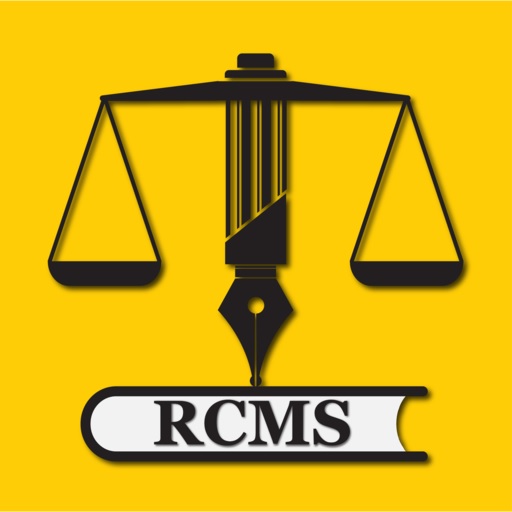As the retail landscape becomes increasingly digital, businesses need efficient ways to manage, organize, and display content across multiple channels. This is where an RCMS, or Retail Content Management System, steps in, offering a powerful solution for handling product information, digital assets, and customer interactions seamlessly. This article explores what an RCMS is, its key features, benefits, and tips for choosing the best RCMS to empower your retail business.
Table of Contents
What is an RCMS: RCMS
An RCMS (Retail Content Management System) is a specialized digital platform that enables retailers to manage all content related to their products, branding, and marketing. Unlike traditional content management systems, RCMS platforms are designed specifically with retail needs in mind, focusing on scalability, personalization, and integration with e-commerce and point-of-sale systems.
How RCMS Differs from a Traditional CMS
An RCMS is purpose-built for the retail sector, which involves unique requirements such as product catalog management, inventory synchronization, multi-channel marketing, and customer engagement. While traditional CMS platforms handle content like blog posts and web pages, an RCMS is optimized to manage product information, real-time pricing updates, and a seamless customer experience across online and offline channels.
Key Features of an RCMS
Implementing an RCMS brings various robust features to streamline retail operations and elevate customer experiences. Let’s dive into some of the core features that make an RCMS a valuable tool for any retail business.
Product Information Management (PIM)
An RCMS often includes a Product Information Management (PIM) module, which centralizes all product-related data in one platform. This feature allows retailers to:
- Manage Detailed Product Descriptions: Write and edit product descriptions and specifications with ease.
- Consistent Pricing: Ensure price consistency across multiple channels, preventing customer frustration due to discrepancies.
- Update Inventory: Real-time inventory synchronization across platforms reduces out-of-stock situations.
Digital Asset Management (DAM)
An RCMS typically includes a Digital Asset Management (DAM) system, which helps retailers organize and control all digital assets, including images, videos, and graphics. With DAM, you can:
- Store and Retrieve Assets Easily: Keep all media files in one organized system for quick access.
- Ensure Brand Consistency: Maintain brand guidelines across various customer touchpoints by using approved visual content.
- Optimize Image Quality: Automatically resize images to fit different channels (e.g., web, mobile, or social media).
Multi-Channel Integration
One of the defining features of an RCMS is its multi-channel integration capability. This enables retailers to present a cohesive brand experience across platforms, such as:
- E-Commerce Sites: Sync product information directly to your e-commerce site.
- Social Media: Distribute content seamlessly to social media platforms to engage customers where they spend their time.
- In-Store Displays: Update digital signage and in-store kiosks with real-time product information and promotions.
Customer Segmentation and Personalization
Personalized experiences are crucial for modern retail, and an RCMS enables this by leveraging customer data for targeted content. With a robust RCMS, retailers can:
- Segment Audiences: Group customers based on behavior, purchase history, and demographics.
- Deliver Personalized Content: Serve personalized product recommendations, offers, and marketing messages based on customer segments.
- Boost Customer Engagement: Increase customer satisfaction and loyalty by addressing individual preferences and needs.
Analytics and Reporting
An RCMS also provides analytics tools to help retailers understand the performance of their content. Key features in analytics and reporting include:
- Real-Time Data: Access insights on customer engagement and content performance in real-time.
- Conversion Tracking: Monitor the effectiveness of product pages and marketing campaigns in driving sales.
- A/B Testing: Test different versions of content to identify the most effective strategies.
Benefits of Using an RCMS
Implementing an RCMS can bring many advantages to retailers, improving both back-end operations and the customer experience. Let’s explore the most notable benefits.
Streamlined Operations
With a single platform to manage product data and digital assets, an RCMS streamlines internal operations. By reducing manual processes, it enables teams to:
- Save Time: Reduce redundant tasks by centralizing product information and digital assets.
- Improve Efficiency: Faster workflows allow marketing and sales teams to focus on strategic initiatives.
- Minimize Errors: Consistent content across all channels eliminates costly errors like pricing discrepancies.
Enhanced Customer Experience
An RCMS can significantly improve the shopping experience by ensuring accurate, timely, and relevant content. Benefits include:
- Consistent Branding: Ensure that customers experience your brand consistently across all touchpoints.
- Increased Trust: Customers trust brands that provide reliable product information and pricing across channels.
- Personalized Shopping: By personalizing content, an RCMS helps retailers meet individual customer expectations.
Scalability for Growing Businesses
As retail businesses grow, they require systems that can scale with them. An RCMS provides this scalability by:
- Easily Handling Large Catalogs: An RCMS can support an extensive product catalog and numerous digital assets without compromising performance.
- Supporting New Channels: With multi-channel integration, expanding into new digital or physical channels is straightforward.
- Automating Repetitive Tasks: Automation tools within an RCMS allow retailers to grow without needing to scale operations manually.
Choosing the Right RCMS for Your Business
When selecting an RCMS, it’s important to consider your unique business needs, budget, and future growth plans. Here are some tips to help you choose the right platform:
Identify Your Requirements
Evaluate your retail business’s current operations and pinpoint areas where an RCMS can make the most significant impact. Consider factors like:
- Catalog Size: If you have a large product catalog, look for an RCMS that can handle extensive inventories.
- Channel Integration Needs: Ensure the RCMS can integrate seamlessly with your current e-commerce, social media, and in-store systems.
- Personalization Capabilities: Decide how critical customer personalization is to your brand strategy.
Compare Platform Features
Different RCMS platforms offer varied features, so compare options carefully. Some platforms are more focused on PIM, while others excel in DAM or analytics. Look for features such as:
- Ease of Use: Opt for a platform with an intuitive interface to reduce the learning curve.
- Customization Options: Ensure you can customize the RCMS to fit your specific brand and operational needs.
- Support and Training: Check if the platform provider offers training, support, and resources to help your team use the system effectively.
Consider the Cost
RCMS platforms vary in cost depending on their features and scale. Make sure you evaluate:
- Initial Setup Fees: Some RCMS providers charge a one-time setup fee, especially for custom configurations.
- Subscription Costs: Ongoing subscription fees often depend on the number of users or level of features.
- Maintenance and Support: Assess if there are any hidden maintenance or support costs associated with the platform.
Top RCMS Platforms for Retailers
Here’s a quick look at some of the top RCMS platforms favored by retailers:
Shopify Plus
Shopify Plus is known for its scalability and ease of use. While traditionally an e-commerce platform, it also offers robust content management features for larger retail businesses.
Contentful
Contentful is a powerful headless CMS that integrates with e-commerce platforms, allowing retailers to build custom digital experiences across various channels.
Magento Commerce
Magento Commerce offers extensive flexibility and customization options, making it ideal for retailers looking for a highly configurable RCMS.
Salsify
Salsify focuses on PIM and DAM capabilities, which makes it a good choice for retailers who need comprehensive product data and digital asset management.
Conclusion: The Future of Retail with RCMS
As retail continues to evolve in the digital era, an RCMS becomes an indispensable tool for businesses aiming to deliver consistent, personalized, and scalable shopping experiences. With an RCMS, retailers can simplify their operations, enhance customer engagement, and stay competitive in a fast-paced market.
Whether you’re a small retailer or a large chain, selecting the right RCMS can make a transformative difference. Evaluate your needs, compare features, and consider the cost to find a solution that aligns with your business goals and growth strategy. An investment in an RCMS today could be the cornerstone of retail success tomorrow.


